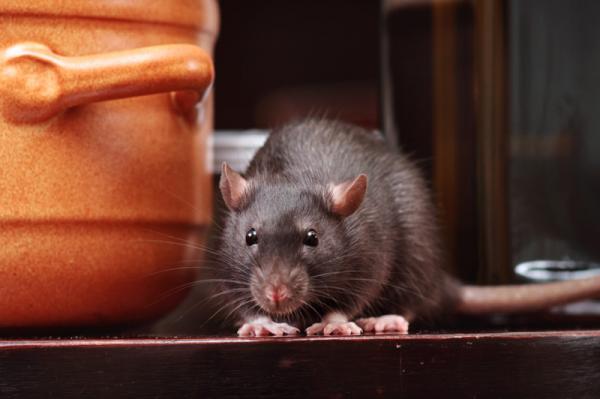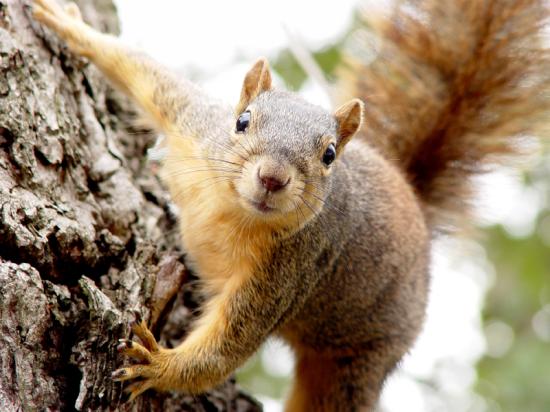There are a number of pests in which are more active during different parts of the year. Rodents are a common problem in the colder months, and it is important to spot the signs of an infestation quickly in order to treat them effectively. That’s why we have answered some frequently asked questions on rodents and how to spot them below.

1. What are rodents?
Rodents are mammals that are commonly characterised by their continuously growing incisors. There are three types of rodent that are subject to pest control:
- Mice
- Rats
- Squirrels
2. How can I tell if I have a mice or rat problem?
Rats thrive on familiarity, and once they have moved into your home it won’t be long until their friends turn up uninvited to join them. The thought of rats or mice living in your kitchen for instance can be unbearable. There are a few ways to tell if you have mice or rats lurking in your home, including:
- Signs of infestation including droppings (around the size of a grain of rice)
- Shredded paper/material
- Strong smell of urine
- Noises at night
- Smear marks on skirting boards
3. What is the difference between mice and rats?
Rats are much larger than mice, averaging at approximately 9-11 inches long, with their thick tail shorter than their bodies, as opposed to mice which have thinner tails the same length if not longer than the size of their body. Rats also weigh a lot more than mice due to the difference in size. For example, at around just 6 weeks, a rat already weighs approximately 100 grams, over double the weight of an adult mouse.
4. What types of mice are there?
There are commonly two different types of mice:
House Mouse – Dusty grey in colour, these mice have a small head and slender body and are known to have excellent vision, smell, hearing and touch. These pests are highly adaptable to homes and indoor buildings, needing the smallest of spaces to be able to enter a building, therefore they often have access to many places and infest in large volumes.
Deer Mouse – Also referred to as a field mouse, these mice are reddish to golden brown in colour with white feet and chest. These pests have a small head and body, yet are larger in size than a house mouse. Deer mouse feast on seeds, grains and fruit and often aggravate farmers as a result of them infiltrating storage grains. These rodents are well-known carriers of the deadly Hantavirus which has been known to cause numerous deaths, therefore pose serious health threats for humans and household pets.

5. What types of rats are there?
There are commonly three different types of rats:
Norway Rats – These rats can also be named brown or sewer rats, and can be identified by their grey-brown bodies. Norway rats have small ears and eyes and their tales are shorter than their body length. These rats are a lot larger than other rat species; they burrow in gardens and fields, beneath rubbish or building foundations. Shredded paper and cloth is used to line their nests as they prefer fibrous materials.
Roof Rats – Also referred to as black rats, these rats are superb climbers that tend to live above ground. Wild roof rats inhabit shrubs and trees, yet in a domestic environment will seek secure, elevated places such as an attic or cabinet. Roof rats can enter homes through trees that are close to windows and prefer warmer climates.
Woodrats – These types of rodent are known to be fond of shiny objects, and are often referred to as ’packrats.’ Woodrats gnaw on trees, furniture, paper and even mattress bedding. Because of this, they are known to cause serious problems for homeowners and farmers.
6. When are rats most active?
Rats are nocturnal creatures, meaning that they are most active at night. Because of this, an infestation can develop some time before a rat is even seen. If crucial resources such as food and water are scare however, they will become more active during the day.
7. How can rodents be treated?
Rodents can be treated with numerous techniques, although this is largely dependent on:
- The environment in which they are inhabiting
- Domestic circumstances, such as any children or domestic pets on site
- The size or extent of the infestation
Rats are intelligent creatures, and quickly wise up to any traps or poisons being used. Not only this, but rats circumvent many traps through communicating with one another. It will take two visits from a professional pest controller to treat rodent infestations, as initially the pest controller will need to attend site to access the work required, trapping squirrels or, in the case of rats and mice, using bait or sticky boards. Our controllers will also make sure to give tips on combating further infestation, making sure your pest problem is a thing of the past. Our controllers will return afterwards to remove any remaining baits, boards or traps, and any dead bodies.
8. How can I prevent mice and rats from infesting in my home?
To prevent your home from rodent infestation, you will firstly need to survey your garden, noting the following:
- Making sure all shrubbery and trees are cut to ensure they are a good distance from your home.
- Removing any plants or trees in which grow fruit or vegetables.
- Ceasing any food put out for birds or pet food.
- Checking your vents, windows and roof, noticing any areas in your home where a gap may feasibly widen.
9. Do rats only live in unclean environments?
Rats are often associated with living in dirty, poor conditions such as sewers, although this doesn’t necessarily mean your garden isn’t an ideal environment, or even your home. Rats can find shelter underneath your shed and even bury themselves in compost heaps. Rats themselves are far from dirty, as they spend a lot of time trying to keep themselves clean, washing themselves regularly and incessantly.
10. What diseases do rodents carry and are they dangerous?
Mice and rats carry different diseases, depending on the environment in which they are exposed. Some of these diseases are dangerous and can lead to serious health hazards.
Some of the diseases mice are known to carry include:
Salmonella bacteria: The Salmonella bacteria (Salmonellosis) causes a gastrointestinal infection and can infect both animals and humans. Usually the infection will last 4-7 days and in some more serious cases, those infected may need to be hospitalised. In extreme cases, Salmonella has been known to lead to death, though generally this is in patients subject to a higher risk such as the elderly, infants and those with low immunity.
Lymphocytic Choriomeningitis (LCMV): Lymphocytic Choriomeningitis is a virus caused by rodents, and creates neurological disease in humans. Those infected can become symptomatic from 8-14 days. Symptoms have two phases, the first phase is less serious and can range from: fever, lethargy, loss of appetite, headache, nausea, malaise, vomiting, joint and testicular pain.
It is important to make sure all pest problems are treated by a professional and reputable pest control company to ensure pests are treated safely and efficiently. We recommend nationwide pest control company, TDC Pest Control.




